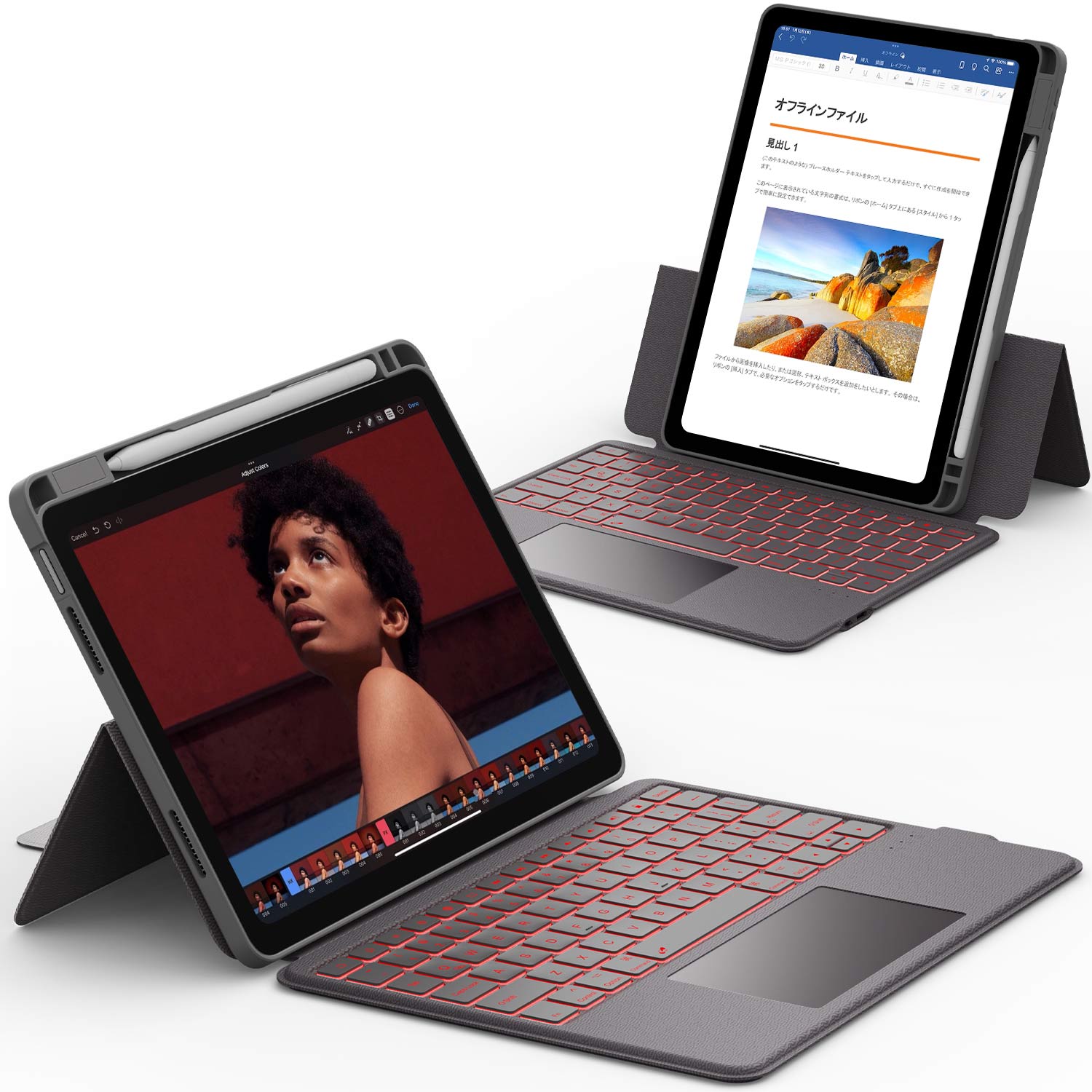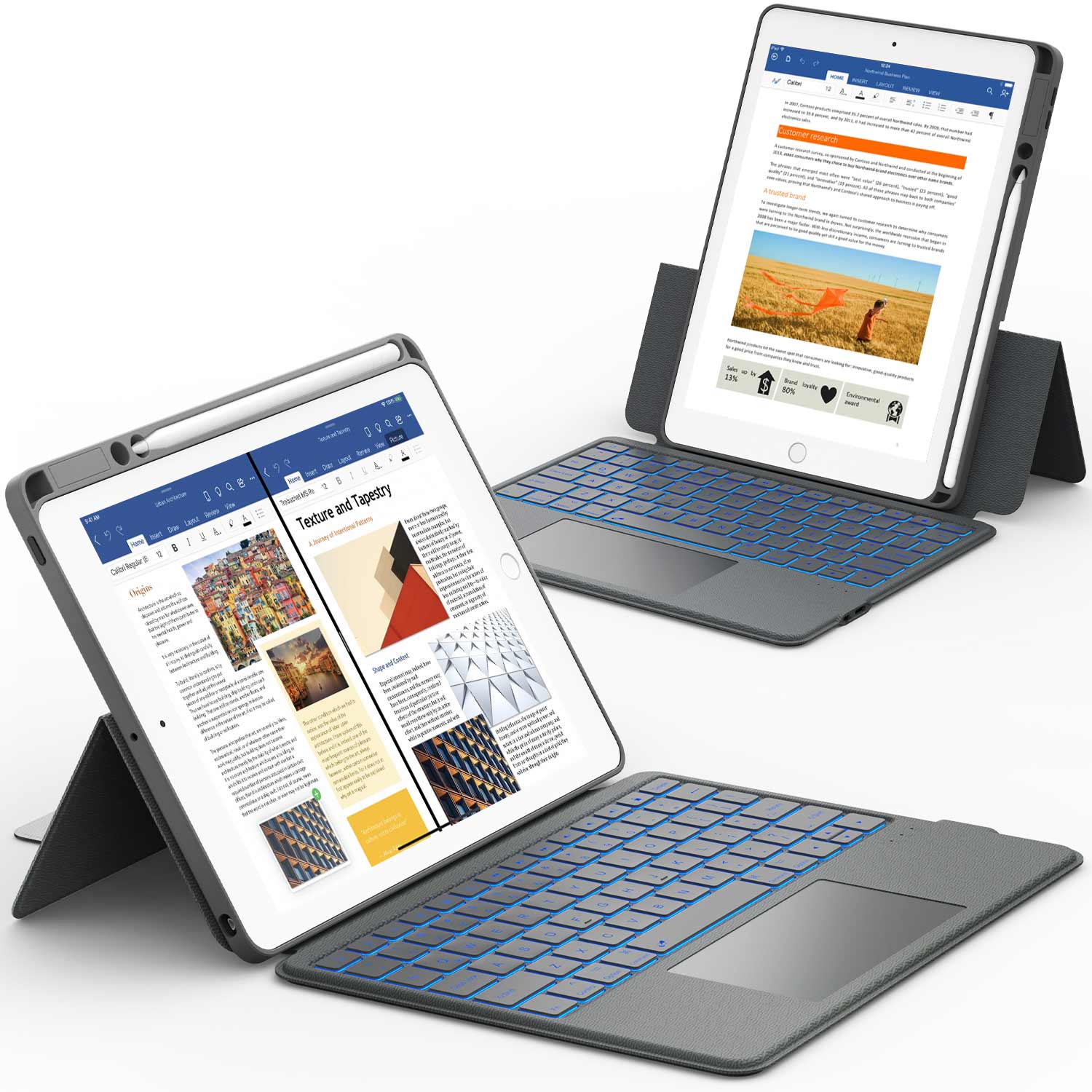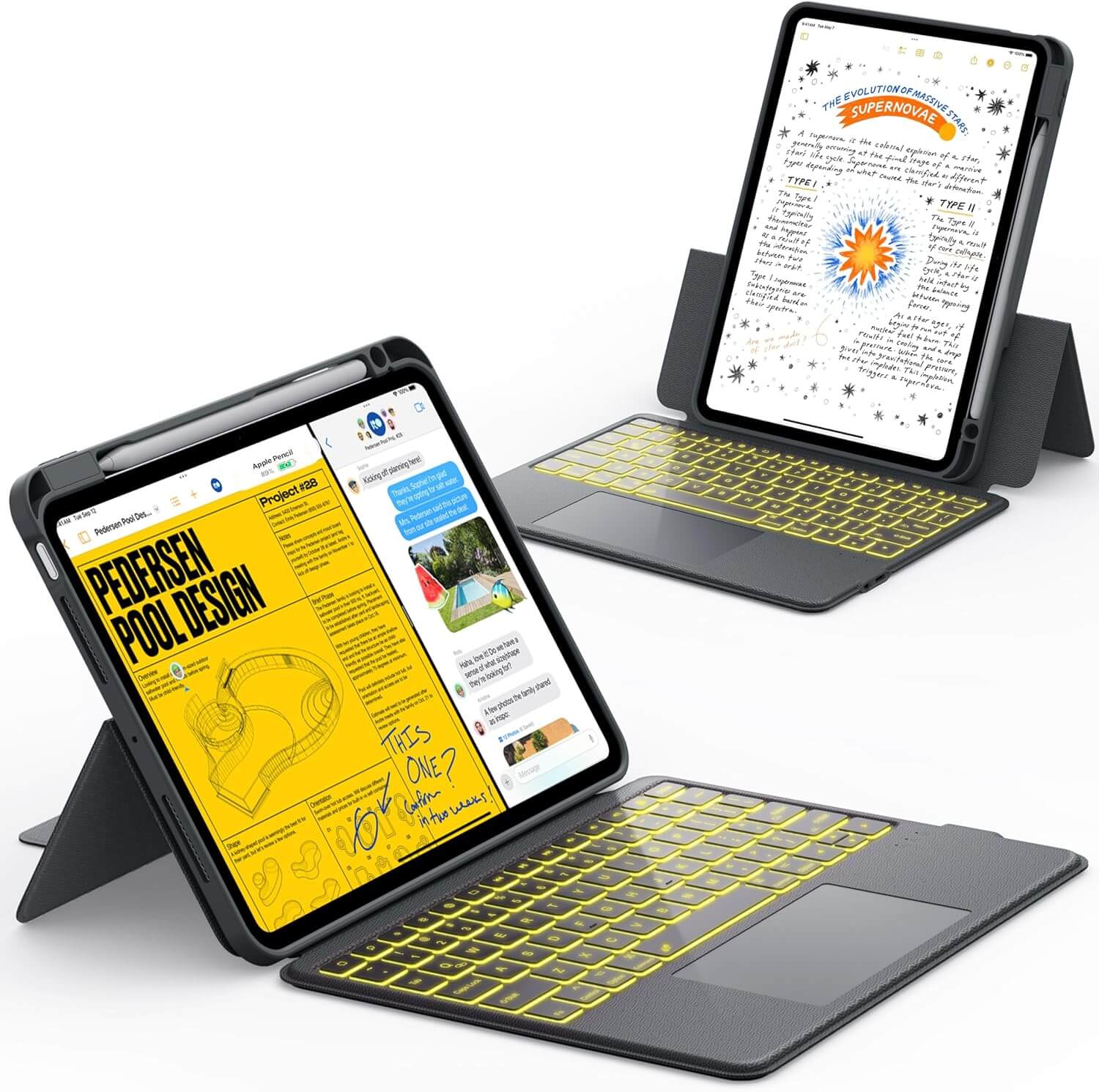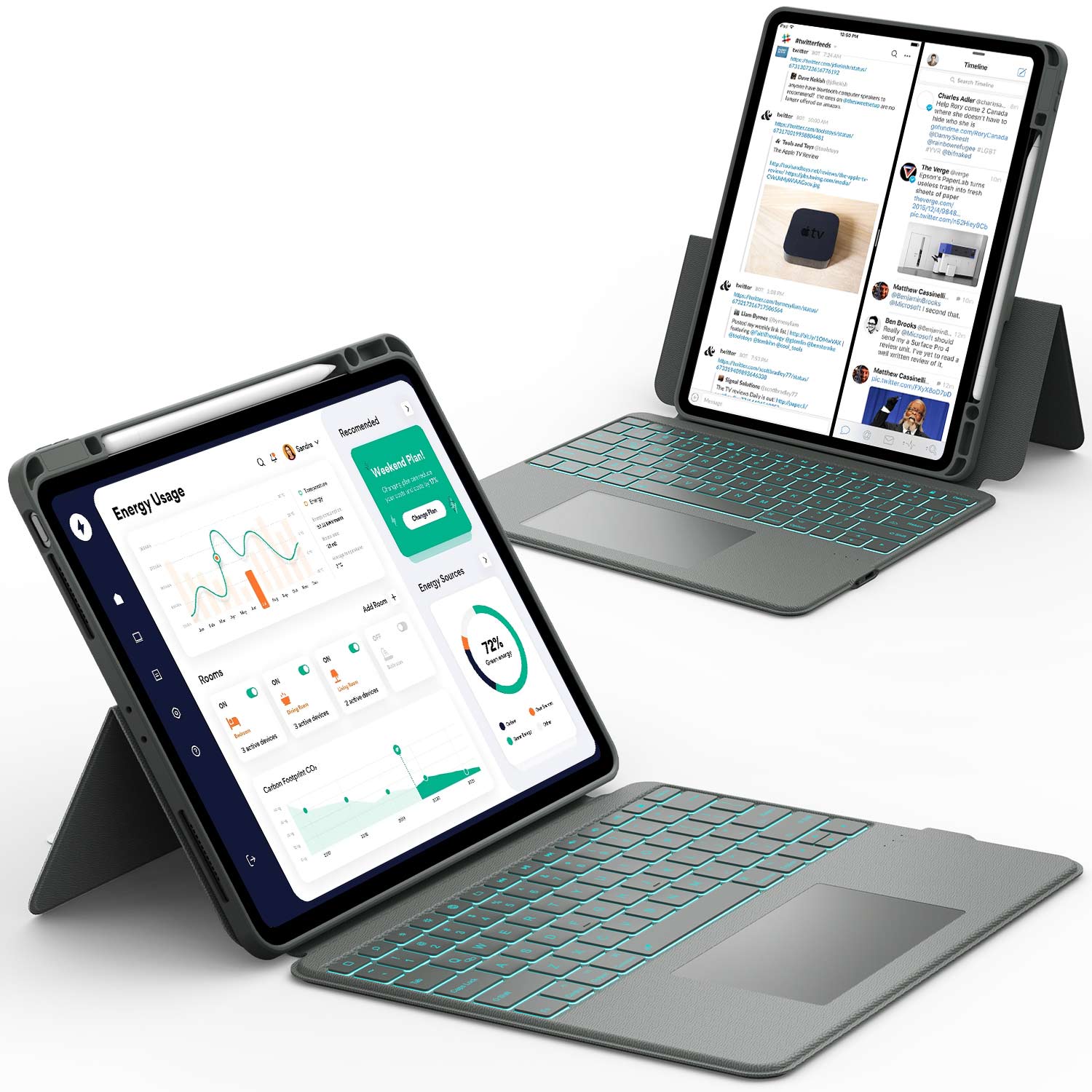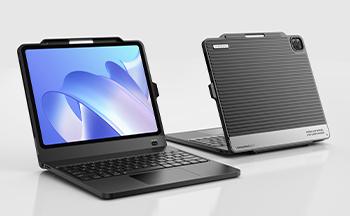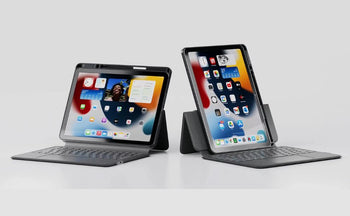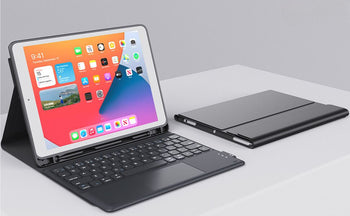It's tough being a parent these days, especially with all the screens around. Kids seem glued to their iPads, and it can feel impossible to pull them away. But don't worry, Apple actually built in some pretty good tools to help. This guide will walk you through setting up your child's iPad so it's a bit more balanced, helping you manage their screen time and what they can access. It's all about finding that sweet spot so they can still enjoy their device without it taking over their whole world.
Key Takeaways
- Screen Time is your main tool for managing iPad use; turn it on for both your device and your child's.
- Content & Privacy Restrictions let you control what apps, purchases, and features your child can use.
- You can limit explicit content, filter websites, and manage what Siri and other smart features can do.
- Game Center settings can be adjusted to restrict multiplayer games and friend requests.
- Remember to adjust privacy settings and other features to keep your child's information safe and control what changes they can make.
Initial Setup of Screen Time

Okay, so you're ready to get Screen Time up and running on your iPad to help manage your kiddo's usage. It's not as scary as it sounds, I promise! The first step is actually turning the feature on. Let's walk through it.
Setting up Screen Time is a great start to managing your child’s iPad use, but why not make their device even more school-friendly? The CHESONA Keyboard Case for iPad transforms their tablet into a mini-laptop, perfect for typing notes or working on assignments. With responsive keys, a built-in trackpad, and a protective case, it’s designed to keep their iPad safe while boosting productivity.
Turn On Screen Time For Your Device
First things first, let's get Screen Time activated on your iPad. This is important, even if you're primarily concerned with your child's device, because it gives you a central place to manage everything.
- Head over to the Settings app. You know, the one with the gears.
- Scroll down until you see "Screen Time" and tap it.
- You'll probably see a welcome screen explaining what Screen Time does. Tap "Turn On Screen Time".
- It'll ask if this iPad is for you or your child. Choose "This is My [Device Type]".
- Now, you can set up a passcode to prevent changes to the settings. Don't skip this step! It's super important to keep your kid from bypassing the restrictions. Make sure it's something they won't guess, but also something you'll remember. If you have Family Sharing group turned on, you can view overall usage across all devices.
Turn On Screen Time For Your Child's Device
Now for the main event: setting up Screen Time on your child's iPad. There are a couple of ways to do this. You can either do it directly on their device, or remotely if you've set up Family Sharing. I'll cover the direct method here.
- Grab your child's iPad and open the Settings app.
- Find "Screen Time" and tap it.
- Tap "Turn On Screen Time".
- This time, select "This is My Child's [Device Type]".
- Now, you'll go through a series of screens where you can set up things like Downtime (times when the iPad is completely off-limits), App Limits (how long they can use certain apps each day), and Content & Privacy Restrictions. Take your time and think about what's best for your child. You can always adjust these later.
- Again, set a Screen Time passcode! This is crucial. You'll also need to enter your Apple ID so you can reset the passcode if you forget it. This is also where you can set age-appropriate Content & Privacy Restrictions, get a weekly Screen Time report, and lock the Screen Time settings and parental controls.
Setting up Screen Time is just the first step. The real work comes in having open conversations with your child about why you're setting these limits and working together to find a healthy balance. It's not about punishment; it's about helping them develop good habits.
Activating Content and Privacy Restrictions

Okay, so you've got Screen Time up and running. Now it's time to really lock things down with Content & Privacy Restrictions. This is where you get to be the gatekeeper of what your kid can access and do on their iPad. It's not about being a control freak; it's about creating a safe and age-appropriate digital environment. Let's get into it.
Turn On Parental Controls For Your Child’s Device
First things first, you need to actually turn on these restrictions. It's pretty straightforward. Go to Settings, then Screen Time, and find your child's name under the Family section. Tap on "Content & Privacy Restrictions." If it asks for a passcode, that's the Screen Time passcode you set up earlier. Flip the switch to turn it on. Once it's on, you can start customizing the settings.
If you turn off Content & Privacy Restrictions, any parental controls that you turned on will be paused until you turn on Content & Privacy Restrictions again.
Prevent App Store Purchases
This is a big one. Kids are notorious for accidentally (or not so accidentally) racking up charges on the App Store. To prevent this, you can completely block the ability to make purchases. Here's how:
- Go to Settings > Screen Time.
- Tap "Content & Privacy Restrictions."
- Tap "iTunes & App Store Purchases."
- Here, you can set restrictions for:
- Installing Apps
- Deleting Apps
- In-app Purchases
Set each of these to "Don't Allow" to prevent any unwanted spending. It's a simple step that can save you a lot of headaches. You can always change these settings later if needed. This is a great way to prevent app store purchases.
Allow Built-In Apps And Features
Sometimes, you might want to disable certain built-in apps. Maybe you don't want your child using the Camera or Safari at certain times. You can control this too. Go to Settings > Screen Time > Content & Privacy Restrictions > Allowed Apps. From here, you can toggle on or off the apps you want to allow. Turning off an app doesn't delete it; it just hides it from the Home Screen temporarily. For example, if you turn off Mail, the Mail app won't appear on your Home Screen until you turn it back on.
It's a good idea to periodically review these settings as your child gets older and their needs change. What works for a 10-year-old might not be appropriate for a 14-year-old. Communication is key!
Once you’ve chosen the right apps for your child’s iPad, make them even more effective with the CHESONA Keyboard Case. Its comfortable, backlit keyboard and precise trackpad make note-taking and homework a breeze, turning their iPad into a powerful study tool. Plus, the sturdy case keeps their device safe from accidental drops—perfect for young users!
Managing Content Restrictions

Prevent Explicit Content And Content Ratings
Okay, so you want to make sure your kid isn't stumbling across stuff they shouldn't be seeing or hearing? This is where you set those boundaries. You can filter out explicit language in music, podcasts, and even news. It's not a perfect system, but it's a good start. You can also restrict movies and TV shows based on their ratings. Here's how you can manage allowed store content:
- Go to Settings, then Screen Time.
- Tap Content & Privacy Restrictions.
- Tap Content Restrictions, then choose the settings you want for each feature.
It's worth noting that these settings aren't foolproof. Some content might slip through the cracks, so it's still important to have open conversations with your kids about what they're seeing online.
Prevent Web Content
This is a big one. The internet is a wild place, and you probably don't want your kiddo having free rein. You've got a few options here. You can either block specific websites or limit access to only allowed websites. I'd suggest starting with the "Limit Adult Websites" option. It's not perfect, but it's better than nothing. You can always add specific sites to the "Never Allow" list if needed. To manage Screen Time settings, go to Content & Privacy Restrictions, then Web Content. From there, you can choose to:
- Unrestricted Access: Allows access to all websites.
- Limit Adult Websites: Automatically limits access to many adult websites.
- Allowed Websites Only: Only allows access to websites you specifically add to the allowed list.
It's a bit of work to curate a list of allowed websites, but it might be worth it for younger kids. For older kids, the "Limit Adult Websites" option might be a good compromise. Remember, it's all about finding what works best for your family.
Controlling Siri and Intelligence Features
Okay, so let's talk about Siri and all the intelligence features on the iPad. It's pretty cool stuff, but you might want to keep an eye on what your kids are doing with it. You can actually restrict a bunch of things, which is super helpful.
Restrict Intelligence & Siri
You can control whether your child can use Siri and other intelligent features. It's all about going into the settings and tweaking what's allowed. Here's a quick rundown of how to do it:
- Head to the Settings app on the iPad.
- Tap on "Screen Time".
- Go to "Content & Privacy Restrictions", and then tap "Intelligence & Siri."
- From there, you can customize the settings.
Here's what you can toggle:
- Image Creation
- Writing Tools
- ChatGPT Integration
- Siri & Dictation
- Web Search Content
- Explicit Language
- Maths Results
It's a good idea to review these settings periodically. Kids are smart and might try to find ways around the restrictions, so staying vigilant is key.
For example, you might want to prevent them from using web search content if you're worried about what they might stumble upon. It's all about finding the right balance between letting them explore and keeping them safe.
Game Center and Privacy Settings

Restrict Game Center
Game Center can be a fun way for kids to connect with friends and play games, but it also opens up some potential privacy concerns. You can limit what your child can do within Game Center through Screen Time. These restrictions only apply to games that actually use Game Center features, so keep that in mind.
To get started:
- Go to Settings, then tap Screen Time.
- Tap Content & Privacy Restrictions, then App Store, Media, Web & Games.
- Scroll down to Game Center and pick your settings.
Here's a rundown of what you can restrict:
- Multiplayer Games: Stop them from playing with everyone, limit to just friends, or allow anyone.
- Adding Friends: Block the ability to add new friends in Game Center.
- Connect with Friends: Prevent sharing their Game Center friend list with other games.
- Screen Recording: Disable the ability to record their screen and sound.
- Nearby Multiplayer: Turn off the option to play with people nearby.
- Private Messaging: Stop them from using voice chat or sending custom messages with invites.
- Profile Privacy Changes: Prevent changes to their profile privacy settings.
- Avatar & Nickname Changes: Block them from changing their avatar and nickname.
It's worth noting that some games might have their own friend systems and communication methods outside of Game Center. So, these restrictions won't cover everything.
Allow Changes To Privacy Settings
The privacy settings on the iPad give you control over which apps can access your child's information and device features. For example, you might want to let a social media app use the camera, but you might not want every app to have access to their location.
To manage these settings:
- Open Settings, then tap Screen Time.
- Tap Content & Privacy Restrictions. Enter your passcode if asked.
- Under Privacy, tap the setting you want to adjust.
You can restrict changes to the following:
- Location Services: Lock down location access for apps and websites.
- Contacts: Prevent apps from accessing their contacts.
- Calendars: Stop apps from seeing their calendar.
- Reminders: Block access to reminders.
- Photos: Prevent apps from requesting access to their photos.
- Share My Location: Control location sharing in Messages and Find My.
- Bluetooth Sharing: Prevent data sharing via Bluetooth.
- Microphone: Stop apps from requesting microphone access.
- Speech Recognition: Prevent access to Speech Recognition.
- Apple Advertising: Prevent changes to advertising settings.
- Allow Apps to Request to Track: Prevent tracking by apps they've denied access to.
- Media & Apple Music: Prevent access to photos, videos, or music.
Other Settings and Features
Allow Changes To Other Settings And Features
So, you've locked down the big stuff, but there are still a few other areas you might want to control. This section covers those miscellaneous settings that can impact your child's iPad experience. It's all about fine-tuning the restrictions to fit your specific needs and concerns.
To get started, head back to the Content & Privacy Restrictions section within Screen Time. You'll find options to prevent changes to things like passcode settings, account modifications, and even mobile data usage. It's pretty straightforward once you're in there.
Here's a quick rundown of some of the settings you can manage:
- Passcode & Face ID: Stop changes to the device passcode, Touch ID, and Face ID. This is useful to prevent kids from changing the passcode and bypassing Screen Time restrictions.
- Accounts: Prevent adding, removing, or modifying accounts on the device. This can stop them from adding new email accounts or social media profiles without your knowledge.
- Mobile Data: Restrict changes to mobile data settings. This can prevent them from turning off Wi-Fi and using up all your data.
- Reduce Loud Sounds: Prevent changes to volume settings for safe listening.
- Driving Focus: Prevent changes to the Driving Focus.
It's worth taking a few minutes to go through each of these settings and decide what's best for your child. Every kid is different, and what works for one might not work for another. The goal is to create a safe and productive digital environment without being overly restrictive.
Make Changes To Health And Safety Features
This is an important area to consider, especially for younger children. While the iPad isn't necessarily a health device, there are some features that can be used to promote safety and well-being. You can manage a child's Screen Time settings to ensure they are protected.
Here are some things you can do:
- Location Services: You can control whether apps and websites can access your child's location. This is important for privacy and safety, especially when using apps that share location data.
- Contacts, Calendars, Reminders, Photos: Prevent apps from accessing personal information. This is a good way to protect your child's privacy and prevent unwanted contact from strangers.
- Share My Location: Lock the settings for location sharing in Messages and Find My. This can be useful for keeping track of your child's whereabouts, but it's important to have an open conversation about privacy and trust.
- Bluetooth Sharing: Prevent devices and apps from sharing data through Bluetooth.
- Microphone & Speech Recognition: Prevent apps from requesting access to the microphone or speech recognition. This can help protect your child's privacy and prevent unwanted recording.
It's a good idea to review these settings periodically, especially as your child gets older and their needs change. You can always adjust the restrictions as needed to ensure they're safe and responsible online.
Wrapping It Up
So, there you have it. Setting up these controls on your kid's iPad might seem like a lot of steps, but it's really worth it. Think of it as building a safe little fence around their digital play area. It's not about stopping them from having fun, but making sure they're safe and not getting too hooked. Every family is different, so play around with these settings. Find what works best for your kids and your peace of mind. A little effort now can save a lot of headaches later, and help your kids have a healthier relationship with their screens.
With Screen Time set up, your child’s iPad is ready for safe, balanced use—now make it a true learning powerhouse with the CHESONA Keyboard Case for iPad. Its long-lasting battery, adjustable stand, and durable design let kids work comfortably on school projects anywhere, while keeping their device protected. The integrated trackpad makes navigating educational apps a snap.
Frequently Asked Questions
What is Screen Time?
Screen Time is a cool feature on your iPhone or iPad that helps you see how much time you and your family spend on your devices. It also lets you set limits and control what kind of stuff your kids can see or do on their iPads.
How do I turn on Screen Time?
You can turn on Screen Time for yourself in the Settings app. Just open Settings, find 'Screen Time,' and tap 'Turn On App & Website Activity.' For your child, you'll also go to Screen Time in Settings, then pick your child's name under 'Family,' and follow the steps to set things up.
What are Content & Privacy Restrictions?
Content & Privacy Restrictions are like a special shield that lets you control what your child can see, buy, or do on their iPad. It helps you block grown-up content, stop them from buying things without asking, and keep their private info safe.
Can I stop my child from downloading or buying apps?
Yes, you can! In the Content & Privacy Restrictions, you can choose to stop your child from installing new apps, deleting apps, or even making purchases inside apps. This helps prevent unexpected bills or unwanted downloads.
Can I block certain websites?
Absolutely. Screen Time lets you block websites with grown-up content. You can also pick specific websites to allow or block, or even set it so your child can only visit websites you've approved.
What happens if I turn off Content & Privacy Restrictions?
If you turn off Content & Privacy Restrictions, all the rules you set up will pause. This means your child will have full access to everything on their iPad until you turn the restrictions back on.
